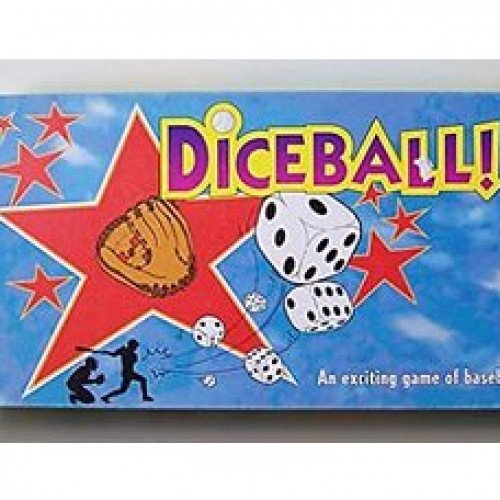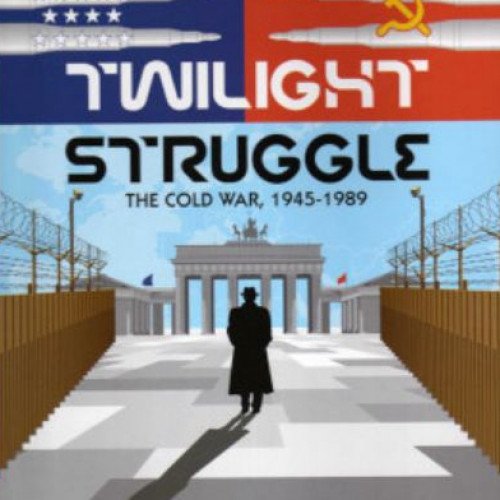DICEBALL VS TWILIGHT STRUGGLE

DICEBALL
Diceball! is a board game in which two players roll dice to simulate a baseball game, one representing the visiting team and the other the home team. Both players use the dice to throw the baseball from the mound to the plate and field the ball on defense. Diceball! was designed to mirror the statistical reality of baseball. A regular game of Diceball! without extra innings lasts about 45 minutes. The game was designed in 1979 on a pizza box by a 16-year old Daniel Girard from Rawdon, Québec, while the Montreal Expos were chasing the pennant in the National League. Girard brought his game to his high school, where he organized tournaments with other students. Given the popularity of the game in his school, Girard also brought his game to university where it also became popular. The interest created by the game was noticed by entrepreneur Louis Desjardins, who launched the game with Girard. To start the game, the visiting team puts a pawn (as a batter and eventually runner) in the batter's box, to get the pitcher's throws. The die replaces the ball. The pitcher rolls the die until either the batter is struck out, the batter is walked, or the ball is hit. If the ball is hit, the offensive team rolls a die to determine the number of dice to be used to hit the ball. The number of dice indicated are rolled and added up. Numbers from 1 to 36 show the location where the ball is hit and the ball is placed on the game board. If the ball is hit on a circle, the ball was hit in the air and an out is recorded. If the ball is hit on a number in a cloud, it is a ground ball and that the batter will have to try to reach a base before the defense throws to that base. If the ball is hit to a star-shaped zone, the runner starts to run around the bases while the defence recovers the ball on the star. If the stars are from 27 to 36 it is a home run and all runners score. Every batter who runs around the bases and reaches home plate before three outs scores a run. As soon as three outs are recorded, stranded runners are removed from the bases. The teams trade places: the defense becomes the offense.
Statistics for this Xoptio

TWILIGHT STRUGGLE
Twilight Struggle: The Cold War, 1945–1989 is a board game for two players, published by GMT Games in 2005. Players are the United States and Soviet Union contesting each other's influence on the world map by using cards that correspond to historical events. The first game designed by Ananda Gupta and Jason Matthews, they intended it to be a quick-playing alternative to more complex card-driven wargames. It achieved critical acclaim for its well-integrated theme, accessibility and introduction of Eurogame elements. After being voted the number one game on BoardGameGeek from December 2010 to January 2016, it has been called "the best board game on the planet". Twilight Struggle is played competitively and was unofficially adapted for play-by-email and live online play. GMT released a Deluxe Edition in 2009, as well as a Collector's Edition as part of the crowdfunding campaign for the game's official adaptation into a video game; this Digital Edition was released in 2016. With over 100,000 copies sold, the game is GMT's all-time best-seller. According to its designers, "Twilight Struggle basically accepts all of the internal logic of the Cold War as true—even those parts of it that are demonstrably false." The game board thus presents a map of a bipolar world according to domino theory, where the US and USSR spread influence to all other countries (except China, which is shown as a powerful card, which must be handed to the other player if used, representing China tilting from one bloc to the other), and attempt to establish control depending on the stability of a country. One scholarly analysis proposed that "hile Twilight Struggle is at its core an area control game, what set its apart from being marked as a Risk clone is the combined effect of material aesthetics and design mechanics meant to embrace a particular point of view tied to the Cold War zeitgeist." Gameplay is divided into ten turns. Each turn players randomly draw a hand of event cards from a single deck. The starting deck contains only early war cards, with historically appropriate mid war and late war events shuffled in on turns 4 and 8 (for a total of 103 cards in the first edition). Players both use a card in the turn's headline phase (in which each player must play a card for its event) and six to eight action rounds.